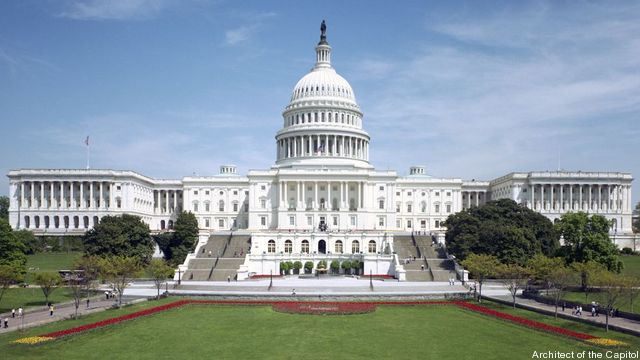Another CR, More Sequestration Misery Coming: Top Budget Expert
Posted on
 WASHINGTON: It’s going to be a long, hot and depressing summer and nothing will really improve over the next six to nine months in terms of sequestration. That’s the bad news. The good news is of the, “well, it could have been a lot worse” type. A budget train wreck isn’t likely, said a former top staffer on the Senate Budget Committee who’s now at the Bipartisan Policy Center.
WASHINGTON: It’s going to be a long, hot and depressing summer and nothing will really improve over the next six to nine months in terms of sequestration. That’s the bad news. The good news is of the, “well, it could have been a lot worse” type. A budget train wreck isn’t likely, said a former top staffer on the Senate Budget Committee who’s now at the Bipartisan Policy Center.
“Anyone who thinks the sequester will change in any significant manner in the near term future is misinformed,” Steve Bell, long-time budget staffer for former Sen. Pete Domenici and one of Washington’s most respected budget wallahs, told investors during a conference call run by Capital Alpha Partners. He offered one small item of comfort on Friday: the debt limits and budget are unlikely to collide in what Washington has come to cal the trainwreck scenario. “I think you’ll see the young lady tied up on the tracks, but when all is said and done you won’t have a complete train wreck. But you will continue to have declines in investment areas of the federal government.”
Among his predictions: there will probably be a three-month continuing resolution or an omnibus spending bill, which will leave top Defense Department and service officials twisting their hair and wailing about uncertainty and their inability to plan — not to mention the fact it will mean an effective cut to the defense budget. And the military’s labs will be particularly hard-hit by the continuing effects of sequestration.
At an earlier event lamenting many of these same themes, three defense contractors offered their own views on sequester and the many uncertainties created by the collision of proliferating global threats at the National Press Club yesterday. While no one made any news, they did offer some specifics about interesting trends as they grapple with Washington’s unstable and unpredictable environment.
The group’s heavyweight, former Air Force Chief of Staff Gen. John Jumper, who is now CEO of defense and intelligence giant SAIC, offered the broadest view, saying he expected the Defense Department and industry to focus for the foreseeable future, not on new programs, but on ways to better integrate existing weapons and sensors into all four services and into the combatant commands.
“You just aren’t going to replace the things you have in traditional ways,” Jumper said. “We’ve got to think of better ways to integrate the stuff we already have.” In a conversation after the press event, I asked Jumper if he thought this would pressure the services and Office of Secretary of Defense to cooperate much more closely. He predicted greater jointness in both the acquisition and operations worlds.
Below the stratospheric perspective of a man who leads 40,000 people, we heard from two small business leaders, one who labors in the intelligence world, Kevin Miller, CEO of Sciolex Corporation, and one, Frank Mendicino, CEO of SKYDEX Technologies, who makes (among other things) a unique product designed to mitigate blast effects inside armored vehicles.
Mendicino got right to his biggest worry as the uncertainties created by Congress and the White House play out. “How much will price and price alone be a factor” in procurement decisions, he asked.
Miller, whose company works with the NRO and other intelligence players, offers them systems engineering, integration, and operations services, His greatest worry is finding and keeping good people, to whom he pays a premium so he can keep them once he finds them. His underlying concern is what he called the “overall climate of uncertainty” which he said is more important than sequestration per se.
Mendicino, looking pained, spoke at the end of the Press Club event, saying that “the people in this country are pleading with our leaders to get together and make constructive decisions.” If Steve Bell is right, he shouldn’t expect much for some time.
Subscribe to our newsletter
Promotions, new products and sales. Directly to your inbox.
